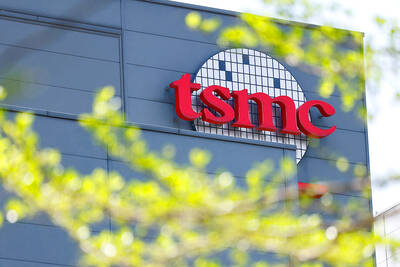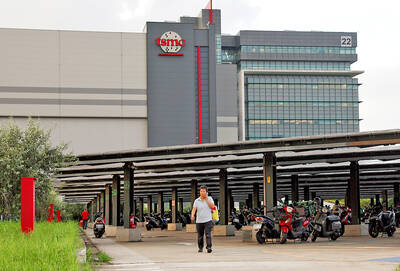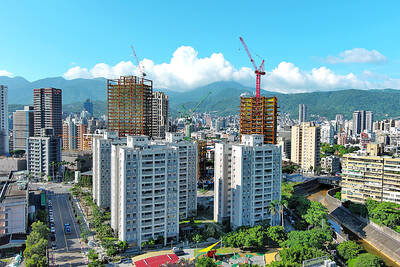Taiwan has officially started the third phase of its offshore wind farm development, after the Ministry of Economic Affairs announced on Saturday that it is accepting applications for projects.
The ministry said that 15 gigawatts (GW) of capacity would be released in phases from 2026 to 2035, with the first phase allocating 3GW to the national grid from 2026 to 2027.
The draft rules for phase 3 were announced back in May, but a finalized map for “go versus no-go” zones was not released until Friday.
The map, which details sensitive areas, such as shipping lanes, fisheries and other possible obstructions, was finalized “with the input of relevant government departments,” the ministry said in a statement, adding that it would help guide developers in choosing the least controversial sites for their projects.
“Learning from past experience, we have communicated extensively to draw up a clear map,” the ministry said. “We hope that developers can avoid unnecessary costs by steering clear of sensitive areas.”
During phase 2 of Taiwan’s offshore wind development, the 350MW Liwei project off Taoyuan was canceled, despite coming in first in the selection process, due to aviation safety concerns.
The “red” zones include the islets of Pengjia (彭佳), Huaping (花瓶) and Mianhua (棉花) off northeastern Taiwan, north-south shipping lanes and Formosan white dolphin habitats along the western coast.
To minimize possible objections and to streamline the application process, projects would be approved by a cross-departmental panel before undergoing environmental impact assessment (EIA), the ministry said.
“To cut down on paperwork, the ministry has invited departments in charge of aeronautics, military, shipping safety, marine ecology, fisheries and mining rights to form a single panel to evaluate the suitability of a project before it can be sent to the Environmental Protection Agency for the EIA process,” it said.
Developers are responsible for drawing up the parameters for their projects and obtaining an EIA report ahead of a dual-stage process, in which the projects would undergo selection where they are evaluated for technical and financial viability, and projects that pass selection would undergo an auction, it added.

TECH TITAN: Pandemic-era demand for semiconductors turbocharged the nation’s GDP per capita to surpass South Korea’s, but it still remains half that of Singapore Taiwan is set to surpass South Korea this year in terms of wealth for the first time in more than two decades, marking a shift in Asia’s economic ranks made possible by the ascent of Taiwan Semiconductor Manufacturing Co (TSMC, 台積電). According to the latest forecasts released on Thursday by the central bank, Taiwan’s GDP is expected to expand 4.55 percent this year, a further upward revision from the 4.45 percent estimate made by the statistics bureau last month. The growth trajectory puts Taiwan on track to exceed South Korea’s GDP per capita — a key measure of living standards — a

Samsung Electronics Co shares jumped 4.47 percent yesterday after reports it has won approval from Nvidia Corp for the use of advanced high-bandwidth memory (HBM) chips, which marks a breakthrough for the South Korean technology leader. The stock closed at 83,500 won in Seoul, the highest since July 31 last year. Yesterday’s gain comes after local media, including the Korea Economic Daily, reported that Samsung’s 12-layer HBM3E product recently passed Nvidia’s qualification tests. That clears the components for use in the artificial intelligence (AI) accelerators essential to the training of AI models from ChatGPT to DeepSeek (深度求索), and finally allows Samsung

READY TO HELP: Should TSMC require assistance, the government would fully cooperate in helping to speed up the establishment of the Chiayi plant, an official said Taiwan Semiconductor Manufacturing Co (TSMC, 台積電) yesterday said its investment plans in Taiwan are “unchanged” amid speculation that the chipmaker might have suspended construction work on its second chip packaging plant in Chiayi County and plans to move equipment arranged for the plant to the US. The Chinese-language Economic Daily News reported earlier yesterday that TSMC had halted the construction of the chip packaging plant, which was scheduled to be completed next year and begin mass production in 2028. TSMC did not directly address whether construction of the plant had halted, but said its investment plans in Taiwan remain “unchanged.” The chipmaker started

MORTGAGE WORRIES: About 34% of respondents to a survey said they would approach multiple lenders to pay for a home, while 29.2% said they would ask family for help New housing projects in Taiwan’s six special municipalities, as well as Hsinchu city and county, are projected to total NT$710.65 billion (US$23.61 billion) in the upcoming fall sales season, a record 30 percent decrease from a year earlier, as tighter mortgage rules prompt developers to pull back, property listing platform 591.com (591新建案) said yesterday. The number of projects has also fallen to 312, a more than 20 percent decrease year-on-year, underscoring weakening sentiment and momentum amid lingering policy and financing headwinds. New Taipei City and Taoyuan bucked the downturn in project value, while Taipei, Hsinchu city and county, Taichung, Tainan and Kaohsiung